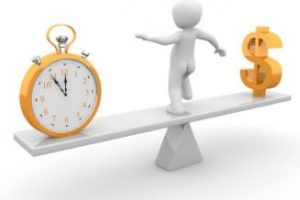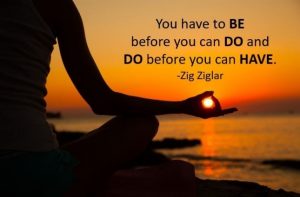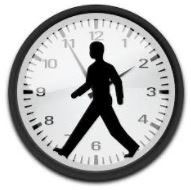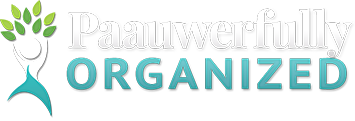As we near the end of the year, you may be giving thought to aspects of your life that you’d like to be different in the coming year. Stress and burnout have increased over the last decade. According to a survey of the American Psychological Association, money, workplace and family responsibilities are the three major sources of stress among U.S. adults. In 2015, Millennials had the highest stress levels of any age group.
7 Signs of Burnout:
- Feeling chronically fatigued and overwhelmed
- Feeling depressed
- Feeling irritable
- Feeling sluggish
- Boredom
- Poor memory
- Craving foods that are high in sugar, salt and fat
 A number of factors can contribute to you experiencing burnout, but one in particular stands out. It’s the relationship between time and material possessions. Many people work more hours so they can afford to buy more things.
A number of factors can contribute to you experiencing burnout, but one in particular stands out. It’s the relationship between time and material possessions. Many people work more hours so they can afford to buy more things.
The bigger question is, do all of these things make us any happier, or are we just senselessly working ourselves into a state of overwhelm and fatigue by doing more so we can have more?
Are you in the habit of bringing work home with you or doing work-related activities while on vacation? If so, what’s pushing you to work so hard?
The word vacation comes from the word vacate: to withdraw from occupancy, surrender possession, or relinquish. For some, “vacating” from work can be difficult. If you’ve ever found yourself spending vacation time reading email, checking for voice messages at work, or conducting business from afar, then you’ve been remotely sucked back into the office. Your body may be on vacation, but your brain is still back at work! And that’s time you’re not spending with your family or friends, or truly relaxing and letting go. As one who has sometimes struggled with “letting go,” I speak from a voice of experience.
My grandparents came from an era where one parent typically stayed home to raise the children, prepare meals, and run the household, while the other parent worked outside the home to earn money. Both had full-time “jobs” but only one got paid for it. Many people didn’t own a car, and if they did, one car per family was a luxury.
Fast forward one generation. My parents both worked outside the home so we could enjoy a higher standard of living than their parents had. Instead of one car, we had two, and eventually three cars as my siblings and I got old enough to drive. We lived in a lovely home, went on great vacations, and our home was filled with nice things. Despite all of those material trappings, the family I grew up in was not very happy much of the time.
Many people believe that having more money so they can buy more things will increase happiness. While serving as a volunteer working in poor villages in Mexico and Tanzania, I made the observation that as long as basic needs are met–adequate food, shelter, clothing, and health care–people can be happy and fulfilled with far fewer things.
The Real Cost of Material Possessions
The real cost of material possessions goes far beyond what we pay for the items we purchase.
In 1900, the average person owned two pairs of shoes and two or three pants. All personal possessions could fit inside of one small suitcase. Here are some startling statistics about how much we own today:

- There are 300,000 items in the average American home, according to the LA Times.
- According to NPR, the average size of the American home has nearly tripled in size over the past 50 years.
- Even with larger homes, one out of every 10 Americans rent offsite storage—the fastest growing segment of the commercial real estate industry over the past four decades, according to New York Times Magazine.
- The US Department of Energy reports that 25% of households with two-car garages don’t have room to park their cars inside them.
- The Self Storage Association reports that the United States has 50,000 storage facilities. Currently, there is 7.3 square feet of self-storage space for every man, woman and child in the nation.
What’s the alternative? Thanks to Craigslist, eBay, and several apps that connect buyers and sellers, you can sell things you no longer need and can earn money when you declutter. When my friend downsized from a 3,500-square-foot home to a 300-square foot RV, she made more than $25,000 selling what wouldn’t fit in the RV. She was also able to enjoy a $10,000 tax deduction for her charitable donations of things that did not sell. If you’d like help valuing household items you donate to charity, I recommend using a free app called ItsDeductible. We’ve saved tens of thousands of dollars over the years on what we’ve owed in taxes because of deductions taken for our charitable in-kind contributions.
If you’re having a hard time imagining what you’d get rid of, ask yourself this question: If my home burned down today, what contents would I miss enough that I’d actively work to replace them?
 Still not convinced that it’s better to get rid of unnecessary things? If you’re paying to store things, consider what would be possible if you invested the money you’re currently spending on storage. Assuming that you’re paying the national average of $163 a month for a 10 x 10 off-site storage unit, if you got rid of the contents and invested that amount into a Roth IRA earning an annualized 5% interest, these invested funds would be worth more than $11,000 in five years. Even if you never invested a penny more from that point forward, you’d have generated $30,000 for your retirement in 20 more years vs. spending $3260 in storage fees.
Still not convinced that it’s better to get rid of unnecessary things? If you’re paying to store things, consider what would be possible if you invested the money you’re currently spending on storage. Assuming that you’re paying the national average of $163 a month for a 10 x 10 off-site storage unit, if you got rid of the contents and invested that amount into a Roth IRA earning an annualized 5% interest, these invested funds would be worth more than $11,000 in five years. Even if you never invested a penny more from that point forward, you’d have generated $30,000 for your retirement in 20 more years vs. spending $3260 in storage fees.
In addition to the monetary costs of acquiring, maintaining and storing all that “stuff,” there are other costs. The stress my father experienced while working so hard to maintain his standard of living took its toll on him, and he had a fatal heart attack at the age of 47.
I’m not suggesting that women should stay home and raise babies, or that there’s anything wrong with a two-income family. I’m also not suggesting that there is anything wrong with owning nice things and going on vacations. What I am suggesting is that each of us look at our own circumstances, decide what’s most important, and what adjustments can be made to enjoy a healthy balance between work and play.
If you’ve been trading time for money and you’re feeling the burnout of chronic stress, it’s time for you to identify ways to change that. Over a decade ago, I made some significant shifts so I could enjoy a more fulfilling life.
Are You a Human Doing or a Human Being?
In my work as a Life Architect, I have become increasingly aware of the growing sense that many individuals feel like they’re running as fast as possible but not getting where they want to go. There’s something resting at the core of all of this–the lens through which we view our lives–also known as a paradigm.
Old paradigm: DO so you can HAVE so you can BE.
New paradigm: BE so you can DO so you can HAVE.
 The old paradigm subscribes to the belief that what we HAVE determines who we will BE. Some of my happiest and most fulfilled clients are those who HAVE very little money and earthly possessions. And some of my most unhappy and unfulfilled clients have been those who HAVE an abundance of money and material goods.
The old paradigm subscribes to the belief that what we HAVE determines who we will BE. Some of my happiest and most fulfilled clients are those who HAVE very little money and earthly possessions. And some of my most unhappy and unfulfilled clients have been those who HAVE an abundance of money and material goods.
Happiness and fulfillment are not created by material wealth or possessions–what we HAVE–but rather by who we are BEING and what we are DOING. I’m not suggesting that we all take a vow of poverty. There’s nothing wrong with HAVING things. The problems arise when we sacrifice who we are BEING for the sake of HAVING more. When we do that, we will never HAVE enough.
My Year-End Gift to You
 Time is something that gives all of us a level playing field since we all get 168 hours a week–86,400 seconds a day. How you choose to invest your time will determine your future. Click here to watch a powerful three-minute video about the value of time.
Time is something that gives all of us a level playing field since we all get 168 hours a week–86,400 seconds a day. How you choose to invest your time will determine your future. Click here to watch a powerful three-minute video about the value of time.
You Have a Choice!
 If your life isn’t what you want it to be—whether that’s due to a cluttered schedule, disorganized space, or disempowering thoughts that hold you back—then I want you to know you have a choice. You can choose to create new surroundings, a new mindset, and a new life. When you realize that you have a choice, you give yourself the power to create change and to direct your life.
If your life isn’t what you want it to be—whether that’s due to a cluttered schedule, disorganized space, or disempowering thoughts that hold you back—then I want you to know you have a choice. You can choose to create new surroundings, a new mindset, and a new life. When you realize that you have a choice, you give yourself the power to create change and to direct your life.
Are you ready to make the choice, right now?
Let me help you. Let’s schedule a no-cost, no-pressure Discovery Call today!
What “excess” in your life do you choose to let go of so you can reduce stress and enjoy a more fulfilling life? Please comment below.
Check out these additional resources:
- Free eBook: 7 Strategies to Overcome Overwhelm
- Guide: Cultivating Happiness: Living Life on Your Terms
- Guide: Find Your Strengths & Choose Your Success
- Guide: 12 Daily Habits to Improve Your Health & Well-being
- Guide: Banish Stress from Your Life: Your Guide to Living More Peacefully
- Blog: What Does Clutter Cost You?
- For businesses: Cost of Disorganization Calculator

Life Architect – Creating Blueprints for Purposeful & Productive Lives
Kathy@OrgCoach.net www.OrgCoach.net Follow me on Facebook






Kathy, this was an EXCELLENT article…and some things for ANYONE to consider and ponder about their life and how they want to spend it. Your articles are very insightful and well written.
Love,
Loretta
Thank you, Loretta. I love to write and enjoy sharing what I’ve learned about life with others.
Dear Kathy, great tips…..These are feelings that I experience sometimes in life with stress and different challenges….I should say often not sometimes….Thank you very much for sharing all these great articles with us….Very very helpful….Love
Thank you, Sheida. The end of the year is a great time to consider different responses to day-to-day stresses in your life. Although you cannot change some events, you can change your response to those life events, which will change the outcome for you.